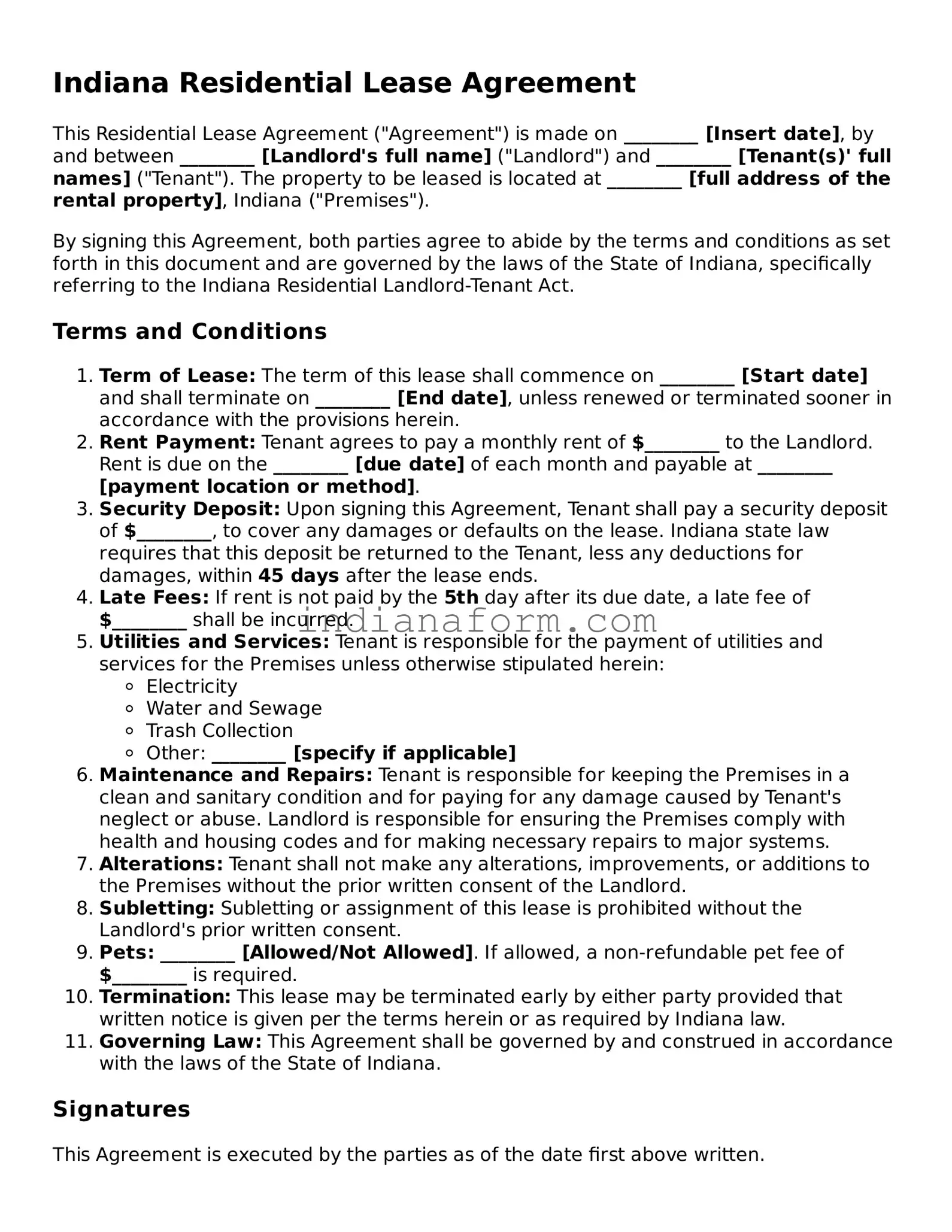What is an Indiana Residential Lease Agreement?
An Indiana Residential Lease Agreement is a legally binding document between a landlord and a tenant that outlines the terms and conditions for renting residential property in the state of Indiana. This agreement covers aspects such as rent, security deposit, lease term, and tenant and landlord obligations.
How can I legally terminate an Indiana Residential Lease Agreement?
To legally terminate an Indiana Residential Lease Agreement, the party wishing to end the lease must follow the termination procedures outlined in the agreement itself, such as providing proper notice in accordance with the lease terms and state laws. Indiana law requires a notice period for termination; the exact period depends on the type of tenancy (e.g., month-to-month tenancies typically require a 30-day notice).
Are there any specific disclosures that must be included in an Indiana Residential Lease Agreement?
Yes, Indiana law requires certain disclosures to be included in a residential lease agreement, such as the identity of anyone authorized to act on behalf of the landlord in matters concerning the property. Additionally, if the rental property was built before 1978, the landlord must include a lead-based paint disclosure in the lease agreement.
What happens if the lease is violated by either the tenant or the landlord?
If the lease is violated by either party, the other party may have grounds to take legal action. For tenants, this could include issues such as failure to make timely rent payments or causing damage beyond normal wear and tear. For landlords, violations could include failing to make necessary repairs or not adhering to the terms outlined in the lease agreement. Depending on the violation, remedies may include termination of the lease, financial damages, or legal enforcement of the lease terms.
What rights do tenants have under an Indiana Residential Lease Agreement?Tenants in Indiana have several rights under a residential lease agreement, including the right to a habitable dwelling, the right to withhold rent if the landlord fails to make critical repairs, and protection against unlawful discrimination. Tenants also have the right to receive notice before the landlord enters the rented property, except in emergencies. Indiana law provides specific protections and obligations for tenants, which are upheld alongside the terms of the residential lease agreement.
